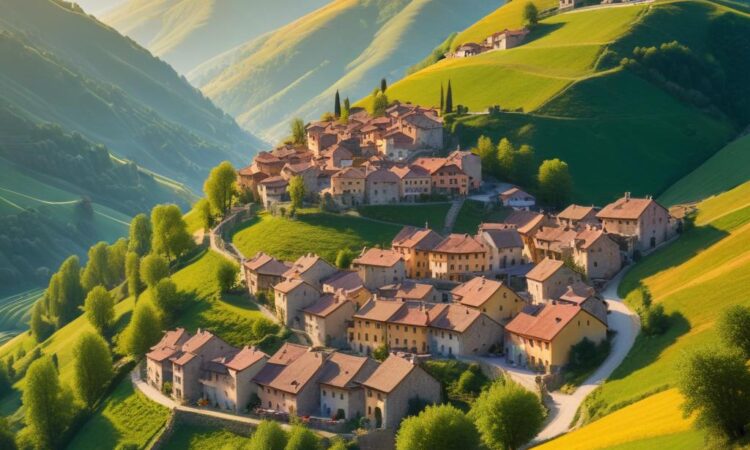Slow Travel & Immersive Experiences: A Counterpoint to Fast-Paced Tourism
In an increasingly fast-paced world, the traditional tourist experience often feels rushed and superficial. We zip from one iconic landmark to another, snapping photos and ticking off destinations from a pre-planned itinerary, leaving with little more than a collection of fleeting memories and a sense of exhaustion. But what if there was a different way to travel – a way that allowed us to truly connect with the places we visit and the people we meet?
This is the essence of slow travel: an approach that prioritizes depth over breadth, immersion over accumulation. It’s about embracing a slower pace, allowing ample time to savor each experience, and fostering deeper connections with the destination and its culture. Instead of aiming to see as much as possible, the focus shifts to experiencing a smaller number of places in a more meaningful and sustainable way.
The Benefits of Slow Travel
The advantages of choosing slow travel extend beyond simply avoiding the feeling of being overwhelmed. By slowing down, we create space for genuine engagement with our surroundings and the local communities. This allows for a richer, more nuanced understanding of the culture, history, and environment of the places we explore.
Here are some key benefits of embracing a slower pace of travel:
- Deeper Cultural Immersion: Slow travel provides ample opportunities to interact with locals, learn about their traditions, and participate in their daily lives. This fosters a deeper understanding and appreciation for their culture.
- Enhanced Mindfulness and Well-being: The relaxed pace of slow travel allows for greater mindfulness and self-reflection. Taking the time to savor experiences reduces stress and enhances overall well-being.
- Sustainable Tourism: By spending more time in fewer locations, slow travelers contribute to more sustainable tourism practices. They reduce their carbon footprint and support local economies more effectively.
- More Authentic Experiences: Slow travel often leads to discovering hidden gems and off-the-beaten-path experiences that are less likely to be found on typical tourist itineraries.
- Greater Appreciation for Nature: Slow travel often involves spending more time outdoors, allowing for a greater appreciation of the natural beauty of a destination.
- Stronger Personal Connections: By spending more time in a place, travelers are more likely to forge meaningful connections with locals and other travelers.
Mindful Travel Practices
Slow travel isn’t just about slowing down; it’s about traveling mindfully. It’s about being present in the moment and appreciating the experiences unfolding before you. Here are some mindful travel practices to incorporate into your journey:
- Disconnect to Reconnect: Limit your screen time and focus on engaging with your surroundings and the people you meet.
- Practice Gratitude: Take time to appreciate the small things, from the beauty of nature to the kindness of strangers.
- Embrace Spontaneity: Allow for flexibility in your itinerary and be open to unexpected opportunities and detours.
- Engage Your Senses: Pay attention to the sights, sounds, smells, tastes, and textures of your surroundings.
- Practice Self-Compassion: Be kind to yourself and allow yourself to rest and recharge when needed.
- Learn Basic Phrases in the Local Language: This simple act can significantly enhance your interactions with locals.
Responsible Tourism
Slow travel is intrinsically linked to responsible tourism. By traveling slowly and mindfully, we can minimize our negative impact on the environment and local communities. Here are some tips for responsible travel:
- Support Local Businesses: Eat at locally-owned restaurants, shop at local markets, and stay in locally-owned accommodations.
- Reduce Your Carbon Footprint: Choose sustainable transportation options, such as walking, cycling, or using public transport.
- Respect Local Customs and Traditions: Dress appropriately, be mindful of noise levels, and learn about local customs before you travel.
- Minimize Waste: Carry a reusable water bottle, shopping bag, and coffee cup. Dispose of your waste responsibly.
- Leave No Trace: Pack out everything you pack in and avoid disturbing natural habitats.
- Give Back to the Community: Consider volunteering your time or donating to a local charity.
Planning Your Slow Travel Adventure
Planning a slow travel trip requires a different approach than planning a fast-paced itinerary. Instead of trying to cram as much as possible into a short amount of time, focus on selecting a few destinations that truly resonate with you. Research the area thoroughly, looking for unique experiences and opportunities to connect with the local culture. Be open to unexpected encounters and be willing to adjust your plans as needed.
Consider choosing destinations that offer opportunities for outdoor activities, cultural immersion, or engaging with local communities. Research local festivals, workshops, or cooking classes that will enrich your experience. Book accommodations that reflect your values, such as eco-lodges or locally-owned guesthouses. Remember, the goal is to create a travel experience that is enriching, fulfilling, and leaves a positive impact on both you and the places you visit.
Slow travel is not about seeing everything; it’s about experiencing something deeply and authentically. By embracing a slower pace, engaging mindfully, and practicing responsible tourism, you can create travel memories that will last a lifetime.
Ultimately, slow travel is a journey of self-discovery as much as it is a journey of exploration. It’s an opportunity to reconnect with yourself, with nature, and with the vibrant tapestry of human cultures. It’s a pathway to enriching experiences and a more sustainable way of traveling. Embark on this journey, and discover the transformative power of slow travel.
This exploration of slow travel has only scratched the surface. There’s a whole world of mindful and responsible travel practices waiting to be discovered. Continue your research, seek out further resources, and most importantly, begin planning your own adventure. The journey awaits.
Remember, the true reward of slow travel lies not in the number of places visited, but in the depth of experiences encountered and the connections forged along the way.

